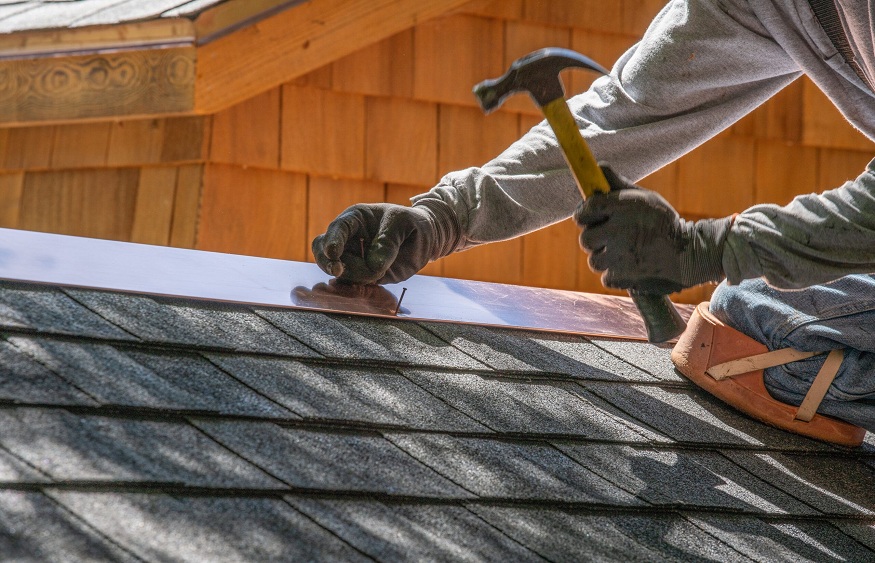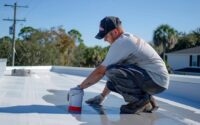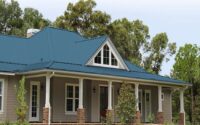Roof Repair Adaptations For Various Regions And Climates
Climate plays a significant role in the longevity and performance of a roof. Different regions and climates can have unique challenges that homeowners and roofing contractors need to address when it comes to roof repairs. Understanding the impact of climate on roofing is crucial in ensuring that the necessary adaptations are made to maintain and protect the roof.
Roof Repairs in Hot and Dry Climates
In hot and dry climates, the intense heat and high solar exposure can cause damage to roofs. It is common to see cracked or curling shingles, as well as discolored and faded roofing materials. Roof repairs in these climates often involve replacing damaged shingles and ensuring proper ventilation to reduce heat buildup. Additionally, applying reflective coatings can help to minimize heat absorption, prolonging the lifespan of the roof.

Roof Repairs in Humid and Tropical Climates
Humid and tropical climates pose a different set of challenges for roof repairs. These regions often experience heavy rainfall, high humidity, and frequent storms. The excess moisture can lead to mold and mildew growth, which can compromise the structural integrity of the roof. Roof repairs in these climates may involve replacing water-damaged materials, improving drainage systems, and installing mold-resistant shingles or coatings.
Roof Repairs in Cold and Snowy Climates
Cold and snowy climates present their own unique challenges for roof repairs. The weight of heavy snow accumulation can put stress on the roof structure and lead to sagging or even collapse in severe cases. Additionally, the formation of ice dams can cause water to seep into the roof, leading to leaks and water damage. Roof repairs in these climates often include removing snow and ice, reinforcing the roof structure, and ensuring proper insulation to prevent ice dam formation.
Roof Repairs in Coastal and Windy Climates
Coastal and windy climates are prone to strong winds and saltwater corrosion, which can significantly impact the condition of roofs. The constant exposure to saltwater in coastal regions can lead to faster material deterioration and rusting. It is essential to address any signs of corrosion promptly. Roof repairs in these climates may involve replacing corroded materials, reinforcing roof anchors, and using wind-resistant roofing materials to withstand high wind speeds.
Choosing the Right Roofing Materials for Different Climates
When it comes to roof repairs, selecting the appropriate roofing materials for different climates is crucial. Certain materials may be more suitable for specific regions and climates due to their durability and resistance to environmental factors. For example, metal roofs have excellent wind resistance, making them ideal for coastal and windy climates. Clay or concrete tiles are highly durable and can withstand hot and dry conditions. Consulting with a professional roofing contractor can help homeowners make informed decisions about the best materials for their specific climate.
Common Roof Repair Issues in Different Regions
Roof leaks and water damage
Roof leaks and water damage are common issues in all regions, but the causes may vary depending on climate. In humid and tropical climates, heavy rainfall and high humidity can lead to water infiltration, causing leaks and structural damage. In cold and snowy climates, ice dam formation and melting snow can result in water seepage. Regular roof inspections and maintenance are essential to identify and address any potential leaks before they cause significant damage.
Mold and mildew growth
In humid and tropical climates, the excess moisture can create the perfect environment for mold and mildew growth on roofs. This can weaken the roof structure and lead to health issues for occupants. Proper ventilation and the use of mold-resistant materials can help prevent mold and mildew growth. Regular cleaning and maintenance are also crucial to remove any organic debris that can contribute to mold growth.
Structural damage from high winds
Coastal and windy climates often experience strong winds, which can cause significant structural damage to roofs. Shingles may be torn off, and roof anchoring systems can get compromised. Roof repairs in these regions may require reinforcing the roof structure, replacing damaged materials, and using wind-resistant roofing products.
Ice dams and roof damage from snow accumulation
Cold and snowy climates are susceptible to the formation of ice dams, which can damage the roof and cause leaks. Regular snow removal and proper insulation are essential in preventing ice dam formation. Roof repairs may involve removing ice dams, reinforcing the roof structure, and improving insulation to prevent future problems.
Saltwater corrosion in coastal regions
Coastal regions prone to saltwater exposure can experience accelerated corrosion of roofing materials. Regular inspections and prompt repairs are essential to address any signs of corrosion and prevent further damage. Using corrosion-resistant materials and applying protective coatings can help mitigate the impact of saltwater exposure in these regions.
Tips for Maintaining and Extending the Lifespan of Your Roof
Regular roof inspections to identify and address issues early
Regular roof inspections, at least twice a year, are recommended to identify any potential issues early. Roofing contractors can assess the condition of the roof, identify signs of damage or wear, and recommend necessary repairs or maintenance. Early detection and timely repairs can help extend the lifespan of the roof and prevent more significant issues down the line.
Proper cleaning and maintenance to prevent debris buildup
Proper cleaning and maintenance are essential to prevent debris buildup on the roof. Leaves, branches, and other organic matter can collect on the roof and clog gutters and drainage systems, leading to water damage and potential leaks. Regularly clearing debris and keeping the roof clean can help maintain its integrity and prevent damage.
Ensure proper ventilation to prevent heat and moisture damage
Proper ventilation is crucial in all climates to prevent moisture buildup and heat damage. In hot and dry climates, proper ventilation can help reduce heat absorption and extend the lifespan of roofing materials. In humid and tropical climates, ventilation helps prevent moisture accumulation, which can lead to mold and mildew growth. Ensuring adequate airflow through the roof can promote a healthier and longer-lasting roofing system.
Consider installing a protective coating to extend the roof’s lifespan
In certain climates, applying a protective coating to the roof can help extend its lifespan and enhance its resistance to environmental factors. Coatings can provide an extra layer of protection against UV rays, water damage, and other elements. Consult with a roofing professional to determine if a protective coating is suitable for your specific climate and roofing material.
Working with Professional Roofing Contractors
When it comes to roof repairs, it is always recommended to work with professional roofing contractors who have experience and expertise in dealing with different climates and regions. They can assess the specific needs of your roof, recommend appropriate repairs or materials, and ensure that the repairs are done correctly and efficiently. Hiring a reputable roofing contractor can give homeowners peace of mind knowing that their roof is in capable hands.
Publisher Details:
Dr. Roof
1100 S Clark Dr, Los Angeles, CA 90035, United States
(818) 533-6893
mydrroof.com
[email protected]
Adapt roof repairs to your climate. Choose materials wisely, conduct regular inspections, and consult professionals for climate-specific maintenance strategies, extending your roof’s lifespan. Trust Dr. Roof for professional roof repairs in Los Angeles, CA.
For further insights, read their new blog on Benefits of Hiring a Roofer.



